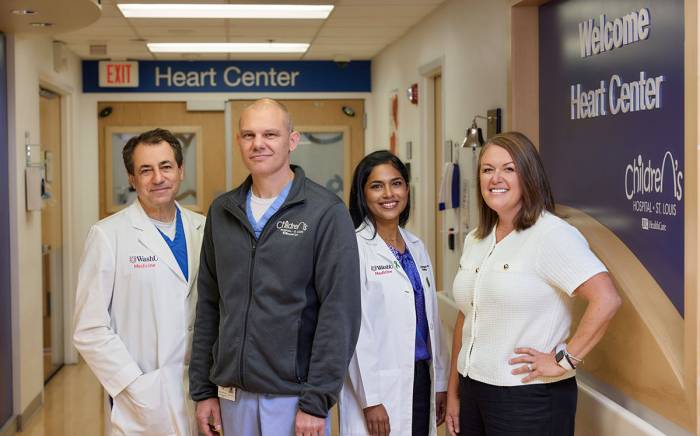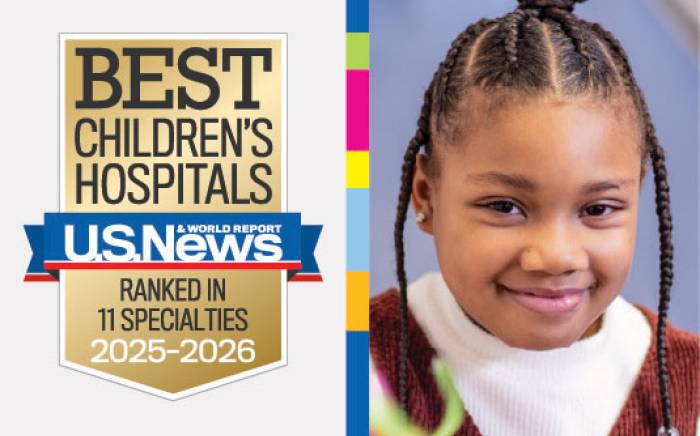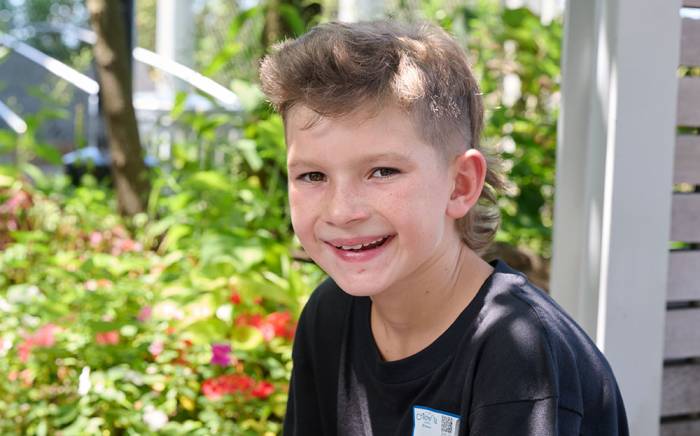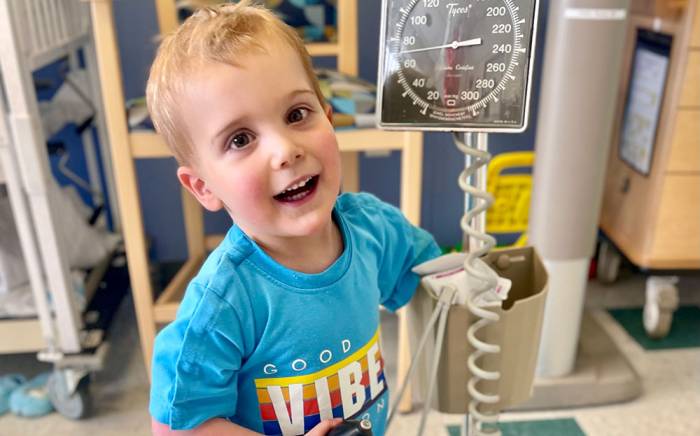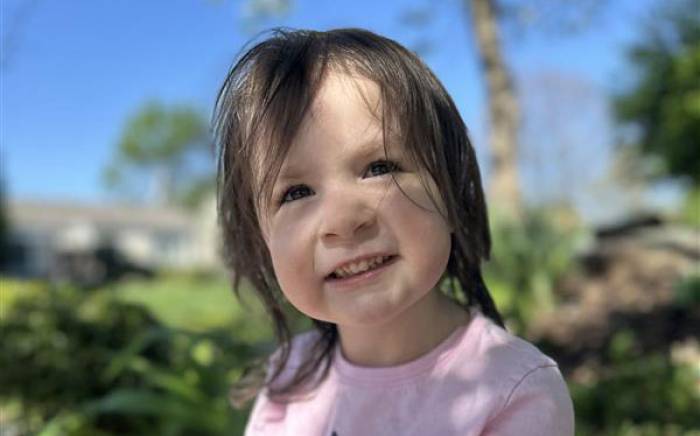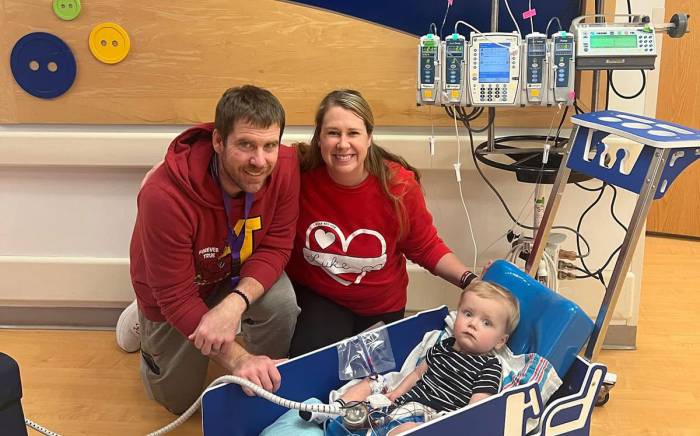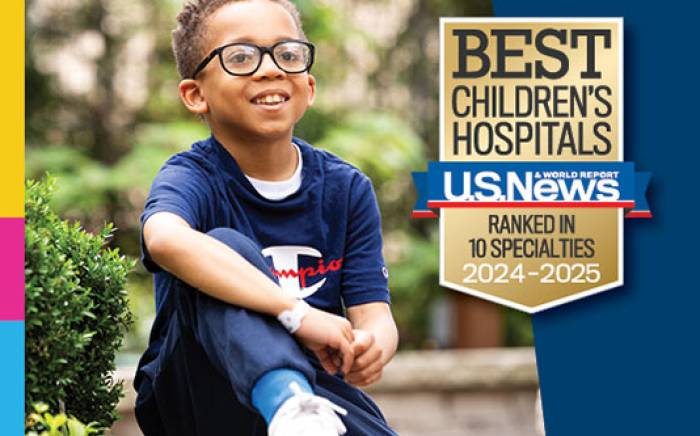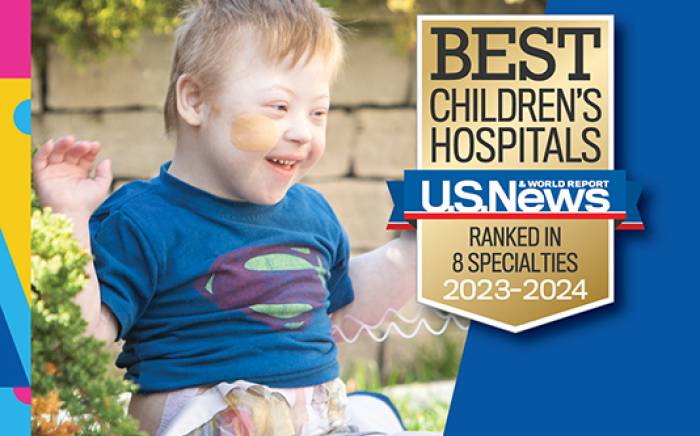Washington University's ARCH program helps families navigate rare medical conditions often causing hypertension in children
 The day of Journee Vinyard’s annual well child exam when she was just 6 years old was one her family would never forget.
The day of Journee Vinyard’s annual well child exam when she was just 6 years old was one her family would never forget.
It began a long road in search of answers, going to multiple doctors and hospitals and, ultimately, arriving at St. Louis Children’s Hospital. It is here where the White Hall, Ill., family has found hope and peace of mind.
On June 30, 2017, Journee’s mother, Kendra Wallis, took her daughter to the pediatrician as she did every year. Her grandmother and Kendra’s mother, Julie Wallis, an LPN and school nurse, worked in the pediatrician’s office at the time.
“Her appointment started off by me taking her blood pressure — it was 180/110. I almost fell over and had my co-worker take it again and the doctor,” Julie recalled. “The doctor said this was not normal and told us that children with high blood pressure often have kidney problems, so she called the ER at St. John’s Hospital in Springfield, Ill., and sent us there right away.
“We had scheduled Journee for the last patient of the day, so we could go out to dinner that night and go shopping in Springfield, but instead we were at the hospital. Journee was an active kid playing ball, dancing and there were no signs of any problems,” Julie said. “It was an incidental finding, and it was just caught that day.”
The family was now about one hour from their home, and suddenly their life was going to change forever.
“I was devastated when this happened. It was a very hard time and so difficult to understand,” Kendra said. “Journee seemed very healthy, active, and had no signs of any problems. This is why I tell everyone well child check-ups are so important. We would not have known anything was wrong if we hadn’t gone, and she could have had a stroke or something worse.”
Journee was admitted to the ICU at St. John’s, where they tried to control her blood pressure with IV medication, and her kidneys were not functioning well. She had an ultrasound that showed her right kidney was very small, and both her left and right kidney had abnormal blood flow as shown by Doppler. She was eventually diagnosed with renal artery stenosis — narrowing of the blood vessels that supply the kidneys, leading to her high blood pressure.
“She was getting sicker each day, and the hospital started talking about dialysis, which they did not typically offer for children, and so they began consulting with St. Louis Children’s Hospital, and soon Journee and Kendra were in an ambulance on their way to St. Louis, while I followed behind them,” Julie said.
Journee was admitted to the ICU at St. Louis Children’s Hospital and was cared for by Washington University pediatric intensivists, nephrologists and other specialists.
Once Journee’s blood pressure was stabilized, requiring five anti-hypertensive medications, she was able to go home but returned to the hospital soon after for a CT scan. In addition to severe renal artery stenosis, affecting both her kidneys, she was also diagnosed with midaortic syndrome — a condition where part of the aorta (the largest blood vessel coming from the heart) and its major branches in the abdomen narrow, which can lead to impaired blood flow to the kidneys and other organs.
Journee’s midaortic syndrome and associated hypertension are now treated by a team of Washington University specialists who make up the Washington University Aortic and Renovascular Center for Hypertension (ARCH) at St. Louis Children’s Hospital. ARCH is a multidisciplinary clinic where patients like Journee are seen by nephrologists, cardiologists, vascular surgeons and other specialists who work together to develop individualized treatment plans for each patient.
Struggling to find answers
“Journee eventually underwent a right nephrectomy (removal of her right kidney) because it was severely damaged by renal artery stenosis, providing only about 6 percent of her total kidney function, yet contributed significantly to her hypertension,” explained Brian Stotter, MD, a Washington University pediatric nephrologist, who was not her physician at the time but is now involved in her care and part of the ARCH team of specialists. She also had a procedure to increase the size of her severely narrowed left renal artery and improve blood flow to her remaining kidney.
Journee’s hospitalization continued in the ICU. Unfortunately, a clot formed in her left renal artery and she developed acute kidney injury.
“She was unable to make any urine to maintain fluid and electrolyte balance or remove metabolic waste products from the body, and required dialysis,”
Dr. Stotter explained.
“At the time they said they didn’t think the left kidney was going to recover and that she might need a transplant,” Julie said. “We were beside ourselves. She was on a vent for over a month, and she needed transfusions and dialysis.”
Journee was able to finally go home again, and her mother and grandmother learned to do dialysis from home, but she later had a seizure and was back in the hospital through the holidays.
“They kept trying dialysis and we just kept praying, ‘Please, God, let the left kidney work, let it get blood.’ We didn’t want her to lose another kidney,” Julie said. “We just needed an answer to our prayers.”
New year, new hope
Kendra and Julie maintained a constant vigil, staying with Journee at the hospital, while Julie’s husband and Kendra’s dad, Rich, and their son, Carson, were home. Journee’s father, Chris Vinyard, his wife, Sierra, and their children and Journee’s siblings, were also a great support system, as well as her grandparents, Gene and Eva Vinyard, who all visited and stayed at the hospital whenever possible.
With each passing day, the family just hoped for any sign that Journee was getting better. Eventually Journee started making a small amount of urine, which signaled to the doctors that her left kidney could possibly function.
One day in early February 2018, Kendra went home for some rest when David Balzer, MD, a Washington University interventional cardiologist and ARCH team specialist, walked into Journee’s room and brought the family some hope.
“We decided to recanalize to her left renal artery (restore blood flow) and took her to the cath lab, where we opened the left artery where it was occluded (obstructed) through a catheter and put a stent in,” Dr. Balzer explained. “That improved the situation significantly, and her hypertension became more manageable through medication, and she no longer required dialysis.”
By mid-February, she was able to go back home. The family kept their White Hall friends and family updated on her progress through a regular Facebook page called “Journee On,” and the town welcomed her home with a parade and police escort.
What the future holds
 Now at 10 years old and getting ready for the fifth grade, Journee’s left kidney continues to function well, and she is a regular patient of the ARCH clinic.
Now at 10 years old and getting ready for the fifth grade, Journee’s left kidney continues to function well, and she is a regular patient of the ARCH clinic.
“She will remain under continued observation and preventative maintenance to make sure that everything is functioning well with the stent,” Dr. Balzer said. “Every few years, she may need to return to the cath lab to look at the renal artery stent.”
Journee is a good example of an ARCH patient because of her complicated vascular disease and the need for a multidisciplinary team of specialists to address her hypertension and long-term complications, Dr. Stotter explained.
“Children with midaortic syndrome, as a result of severe hypertension, are at high risk for long-term complications including early coronary artery disease, heart failure, chronic kidney disease, and stroke,” he said. “My role in Journee’s care is to provide medical management of her hypertension and monitor for end-organ damage related to uncontrolled hypertension.”
After many days of worrying about what all of this meant for Journee, her family says they were relieved to find St. Louis Children’s Hospital and everyone involved in her care.
“We love St. Louis Children’s Hospital,” Julie said. “Of course, we’re truly thankful for the doctors but also the nurses, child life specialists and all of the people who made sure we were comfortable when Journee was sick.”
Journee is an active little girl who loves to play with her dog, Tilley, ride her bike, swim, dance and maybe be a cheerleader one day. She said she has a lot of favorite people at Children’s who were involved in her care, including a singing and dancing housekeeper and a favorite child life specialist. And she even gave back by holding a toy drive for the hospital and its patients for her seventh birthday.
“There are a lot of people that make Children’s Hospital work, and even though they were just doing their job, it meant so much to us, the little things they did,” Julie said. “I always tell friends, it’s the best place you can be.”

